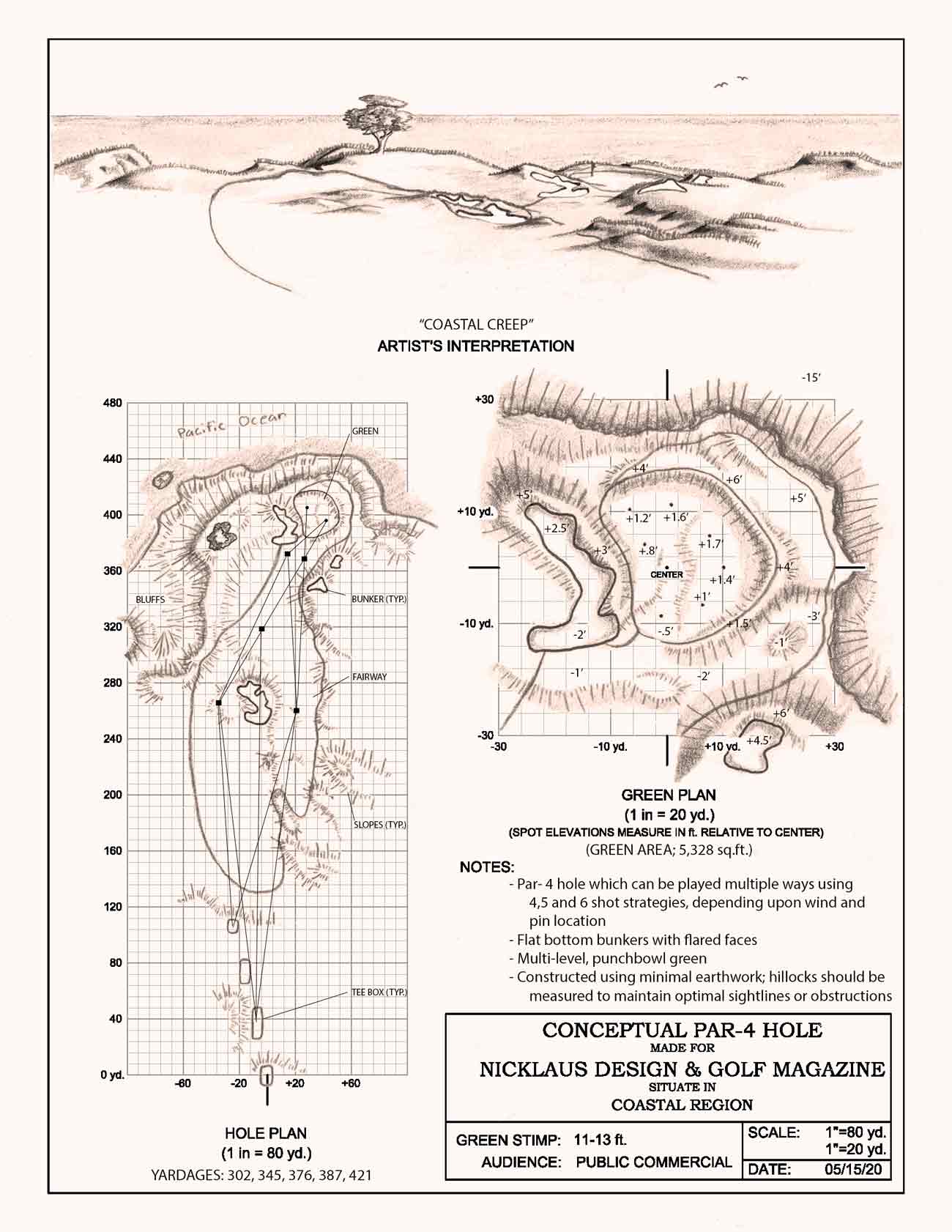Earlier this week, Daniele Smith, an avid golfer from Western Pennsylvania, took a header on his mountain bike and wound up breaking his left thumb in two places.
He’ll be sidelined from the game for at least two months.
On the upside, Smith also received some good news.
Less than 24 hours after his tumble, Smith learned that he’d been selected as the winner of the inaugural GOLF Magazine + Nicklaus Design Challenge, edging out nearly 200 contestants in the search for the perfect par 4.
“I was surprised to get the call so it didn’t hit me fully in the moment,” Smith said Wednesday. “But now the excitement has really started to sink in.”
A senior at Penn State University with a major in civil engineering, Smith turns 22 this month, a young man with golf seasoning beyond his years.

Born and raised in Pittsburgh, he was brought into the game at age 3 by his father, and he’s been knee-deep in it ever since. His home course growing up was Edgewood Country Club, an artful Donald Ross design that’s known for keeping its greens pure and lightning quick. “Golf should be a pleasure, not a penance,” Ross was fond of saying.
As a kid, Smith found the game to be exactly that, though playing it was not the only part he loved. By age 9, he was doodling routings of 18-hole courses by mimicking the maps he saw on the back of scorecards. He still has those childhood sketches in a binder.
“The holes basically look like slugs on the paper,” Smith says. “But my drawing has gotten a lot better since.” So has his game.
At Pittsburgh’s Central Catholic High School, Smith starred on a golf team that captured a regional championship. Before enrolling at Penn State, he played Division III golf for one the university’s bridge campuses, where he was honored in the 2018-19 season as a conference player of the year.
Trying to play professionally is not his intent.
After reviewing the work of our 10 finalists for the GOLF + @NicklausCo Design challenge, @JackNicklaus has a special message for the winner!
— GOLF.com (@GOLF_com) May 15, 2020
Congratulations Daniele Smith – your design is set to become a reality 🙌 pic.twitter.com/a9oq3eShDr
For the past six years, Smith has caddied at Oakmont Country Club, the nine-time U.S. Open stage and as fine a place as any for a design enthusiast to study. Smith has also worked on the Oakmont grounds crew, getting hands-on exposure to both maintenance and design. Two years ago, when Bill Coore and Ben Crenshaw were brought in to touch up bunkers on Oakmont’s par-3 6th hole, Smith shadowed the duo in the field.
Someday, Smith says, he’d like to be an architect himself.
“Having the freedom to express my creativity by putting my name on an 18-hole golf course, that would be absolutely incredible,” he says. But he’s also drawn to restoration work.
“I love looking at run-down tracks and imagining what it would be like to bring them back to life,” he says.
As a compliment to his undergraduate degree in civil engineering, Smith plans to add a minor in landscape architecture, coursework that he’ll take on this fall at Penn State to bolster the foundation for his dream career. On the side, he is also a prolific course photographer, posting images on his Instagram account.
Though his favorite course is Swinley Forest, outside London, his design interests are wide-ranging, and, he says, no single hole or layout served as inspiration for his contest-winning entry, a par 4 he dubbed Coastal Creep.
Of his par-4 design, Smith said, “I wanted to give people plenty to think about.”
The concept, Smith says, does not so much reflect his dream aesthetic as it does his fascination with strategic options.
“It’s meant to be a hole that can play a number of different ways depending on the tee, the wind, the pin position,” Smith says. “I wanted to give people plenty to think about.”
What Smith would like now is a strategy that gets him back on the golf course. There’s only one: healing. He likely won’t be finished with that until late July.
Click here for a deep dive into how the Nicklaus Design team is bringing Smith’s hole to life.











